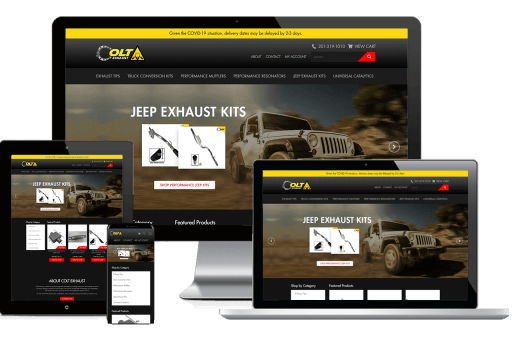In today’s digital age, having a visually appealing and user-friendly website is crucial for automotive businesses. An effective automotive web design not only captures the attention of potential customers but also provides them with a seamless browsing experience. In this blog post, we will explore the best practices for automotive web design that can help drive success online. From responsive design to optimized performance, let’s dive into the key elements that make an automotive website stand out.
Captivating Visuals and Branding
When it comes to automotive web design, captivating visuals, and branding play a pivotal role in creating a strong first impression. From high-resolution images of vehicles to compelling graphics that reflect your brand identity, visuals are a powerful tool for engaging visitors. Additionally, incorporating your logo and using consistent branding elements throughout the website helps to establish brand recognition and credibility.
Start by featuring high-resolution images of vehicles that showcase their unique features and allure. These images should be professionally taken, highlighting the sleek lines, luxurious interiors, and cutting-edge technology that sets your vehicles apart. By providing visually stunning visuals, you can create an emotional connection with your audience and spark their interest in exploring your offerings further.
[Outbound link suggestion: “The Power of Visuals in Web Design” URL: https://www.example.com/power-of-visuals-web-design]
User-Friendly Navigation and Structure
A user-friendly navigation system is vital for automotive websites to ensure visitors can easily find the information they need. Implement a clear and intuitive menu structure that categorizes different sections such as vehicle models, services, and dealership information. Additionally, utilize breadcrumb navigation to provide users with clear paths to navigate back to previous pages. Incorporate search functionality to enable users to quickly search for specific vehicles or services.
To further enhance usability, include search functionality on your automotive website. This enables users to quickly search for specific vehicles, services, or any other relevant information they are seeking. Implementing a search bar prominently on your website can save users time and effort in finding the desired content, especially for those who have a specific vehicle model or service in mind.
Responsive Design for Mobile Optimization
With the majority of users accessing websites on mobile devices, having a responsive design is paramount. Your automotive website should adapt seamlessly to different screen sizes and resolutions, ensuring optimal viewing experiences across devices. Responsive design not only improves user satisfaction but also positively impacts search engine rankings, as search engines prioritize mobile-friendly websites in search results.
Responsive design not only improves user satisfaction but also positively impacts search engine rankings. Search engines prioritize mobile-friendly websites in search results, considering them as a crucial ranking factor. By embracing responsive design, you not only cater to the growing mobile audience but also align with search engine guidelines, potentially boosting your website‘s visibility and organic traffic.
Speed and Performance Optimization
In the fast-paced online world, speed is crucial. Users expect websites to load quickly, and a slow-loading website can significantly impact user experience and lead to high bounce rates. Optimize your automotive website’s performance by compressing images, minifying code, and leveraging caching techniques. Regularly monitor website speed and make necessary optimizations to ensure optimal performance.
One effective technique is to compress images without compromising their quality. Large image files can slow down your website’s loading time, so using tools or plugins to reduce their file size can greatly improve performance. Additionally, consider minifying your website’s code by removing unnecessary spaces, line breaks, and comments. This helps reduce the overall file size and enables faster loading.
A well-designed automotive website sets the stage for success in the competitive digital landscape. By implementing these best practices, including captivating visuals, user-friendly navigation, responsive design, and optimized performance, you can create an exceptional online experience for your visitors. Keep up with the latest trends and continuously refine your automotive web design to stay ahead of the competition and drive success in the automotive industry.
Remember, your website is not only a virtual showroom but also a powerful tool to build trust, engage customers, and drive conversions. So, buckle up and embark on the journey to create an outstanding automotive web design that accelerates your online presence.
Ready to take your small business marketing to the next level? Trust the experts at Libra Web and Marketing Solutions to help you achieve your goals. Whether you need assistance with SEO, PPC advertising, web design, or social media marketing, our team has the knowledge and expertise to drive results. Contact us today to schedule a consultation and let us tailor a marketing strategy that suits your business needs. Together, let’s unlock the potential of your small business and watch it thrive in the digital landscape. Visit Lwam.co for more information.

